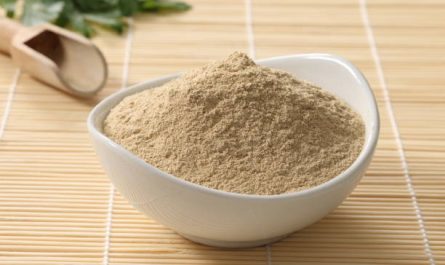Production chemicals are specialty chemicals that are used during oil and gas production to help optimize operations and maximize well productivity and output. They serve various functions such as corrosion inhibition, scale prevention, wax and hydrate control, biocide treatment, and clay stabilization. Using the right production chemicals tailored to a well’s individual needs can significantly boost production rates while lowering costs over the lifetime of the reservoir.
Corrosion Inhibition
One of the primary functions of Production Chemicals chemicals is corrosion inhibition. As crude oil and natural gas are extracted from reservoirs, water is also brought to the surface along with the hydrocarbons. This produced water can be highly corrosive to pipelines and equipment on the wellsite if left untreated. Corrosion inhibitors form a protective barrier on metal surfaces to prevent corrosion. They neutralize corrosive compounds in the fluid and minimize the rate of corrosion. Proper corrosion inhibition extends asset lifetime and prevents costly workovers and replacement of downhole tubulars and surface facilities. A variety of different corrosion inhibitors can be used including liquid, powder, and gas phase chemicals.
Scale Prevention
As reservoir fluids containing dissolved salts and minerals are brought to the surface, changes in pressure and temperature can cause these salts and minerals to precipitate out of solution and deposit as scale. Scale buildup negatively impacts flow assurance and reduces production rates over time. Scale prevention chemicals function by inhibiting scale formation or promoting the crystals to form in a more soluble and removable fashion. Common scales inhibited include carbonates, sulfates, and phosphates of barium, calcium, and strontium. The scale prevention program utilized depends on the type of scale threat in the produced fluids.
Hydrate and Wax Control
In colder environments or deepwater developments, gas hydrates and waxy oil precipitates can cause detrimental plugging and restrictions. Gas hydrates are ice-like solids formed when gas molecules cluster around water under certain pressure-temperature conditions. Waxy precipitation occurs when the temperature of waxy crudes drops below the wax appearance point. Both hydrate and wax control chemicals modify conditions to prevent formation or reformation of the blockages if dissolved. Low dosage hydrate inhibitors are typically thermodynamic or kinetic inhibitors while higher dosage treatments may also include anti-agglomerants. Wax inhibitors function as pour point depressants.
Microbial Growth Control
In the presence of water and nutrients, sulfate-reducing bacteria (SRB) and other microorganisms can thrive in production systems. SRB in particular produce corrosive byproducts that drastically accelerate corrosion when the conditions are right. Biocides are applied to remediate existing microbial growth and then maintain residual levels of biocide to prevent regrowth and activity. Oxidizing and non-oxidizing biocides are selected based on the type and severity of microbial growth present. Continuous trace treatment or batch treatment programs are designed depending on produced water disposal or re-injection schemes.
Clay Stabilization
Some formations contain swelling clays that can expand when wet, causing downhole instability and formation damage issues if not controlled. Swelling clays plug perforations and pore spaces, restricting flow. Clay stabilizers function by displacing exchangeable cations on clay surfaces that cause the clays to swell. This stabilization prevents movement and seals the formation face against further degradation. Common clay stabilizers used are potassium, organic, and composite based depending on the specific clay minerals present.
Sand Control
For unconsolidated and loosely consolidated formations, sand production is a major operational challenge. Produced sand causes abrasive wear to facilities and equipment and increases processing costs. Chemical treatments help stabilize formation sands and prevent their migration. Consolidation agents enhance the formation’s compressive strength to withstand production pressures without failure. Flexible polymers form a barrier on the formation face and in the near-wellbore region to control sand influx. Resin systems are also utilized to bind and strengthen loose sand grains. Chemical sand control applications improve long term productivity over mechanical gravel packing in some cases.
Overall Benefits of Production Chemical Programs
When properly implemented, an optimized production chemical program can provide significant financial benefits over the lifecycle of an oil or gas asset. Field-wide corrosion mitigation prevents unplanned workovers and extensions asset lifetime by years in some cases. Scale and hydrate control maximizes flow assurance and production uptime. Maintaining well and facility integrity with chemical treatments avoids costly workovers, closures, and replacement costs. Microbial remediation eliminates the root cause of microbially influenced corrosion. Sand control and clay stabilization improve long term well productivity versus premature abandonment. Overall, production chemical treatments help increase recovery factors, lower operating expenses, and maximize revenue over the long run. Proper chemical selection and continuous treatment are needed to fully leverage these benefits. Ongoing service and fluid analysis allows programs to evolve with the reservoir throughout its productive life.
*Note:
1. Source: Coherent Market Insights, Public Source, Desk Research
2. We have leveraged AI tools to mine information and compile it.




